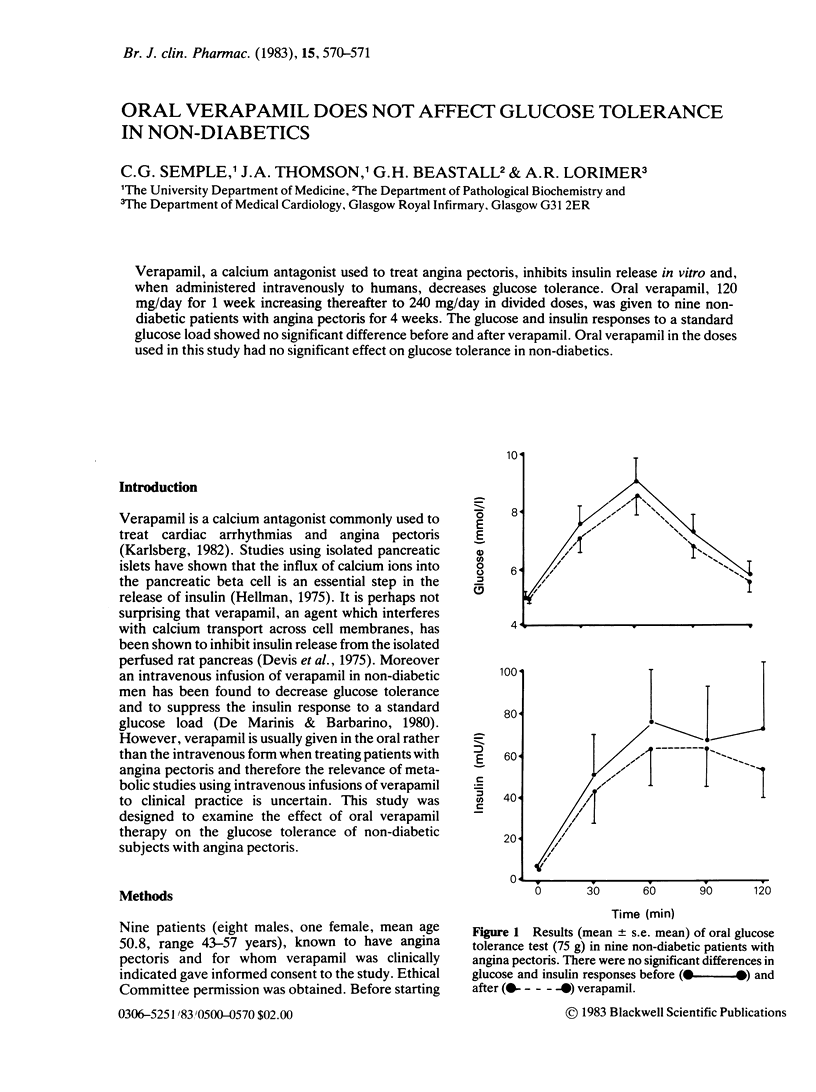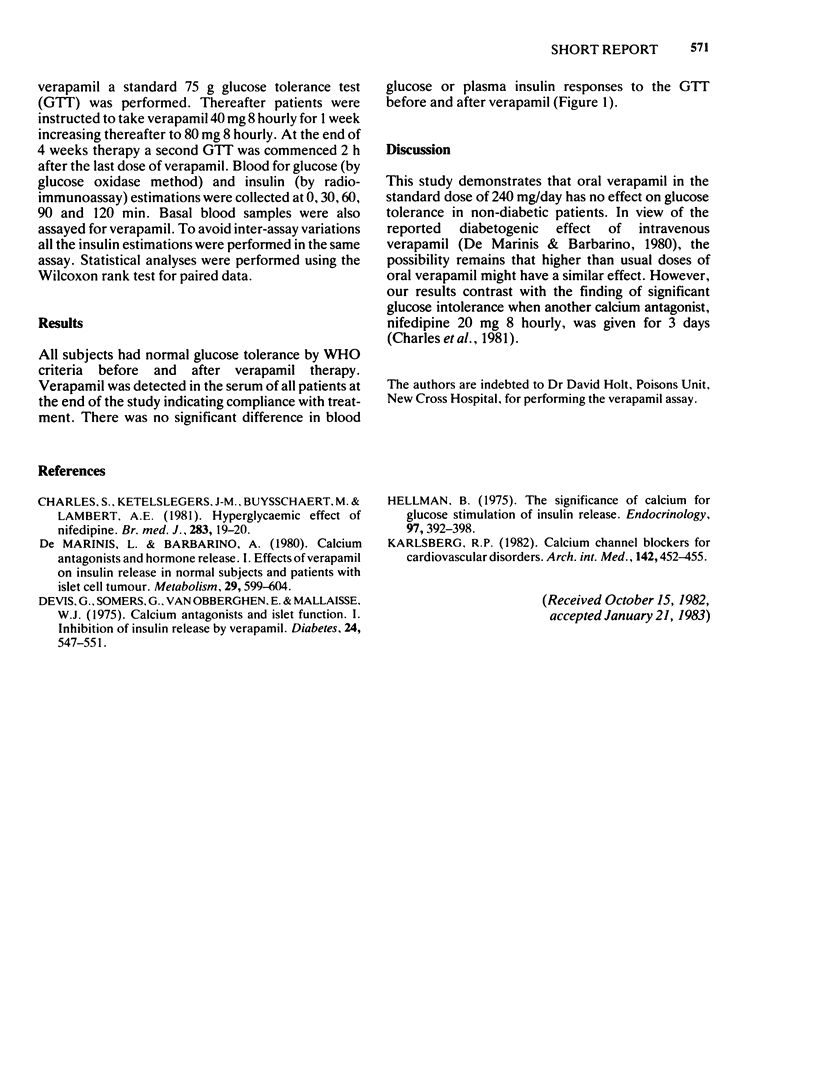Abstract
Verapamil, a calcium antagonist used to treat angina pectoris, inhibits insulin release in vitro and, when administered intravenously to humans, decreases glucose tolerance. Oral verapamil, 120 mg/day for 1 week increasing thereafter to 240 mg/day in divided doses, was given to nine non-diabetic patients with angina pectoris for 4 weeks. The glucose and insulin responses to a standard glucose load showed no significant difference before and after verapamil. Oral verapamil in the doses used in this study had no significant effect on glucose tolerance in non-diabetics.
Full text
PDF

Selected References
These references are in PubMed. This may not be the complete list of references from this article.
- Charles S., Ketelslegers J. M., Buysschaert M., Lambert A. E. Hyperglycaemic effect of nifedipine. Br Med J (Clin Res Ed) 1981 Jul 4;283(6283):19–20. doi: 10.1136/bmj.283.6283.19. [DOI] [PMC free article] [PubMed] [Google Scholar]
- De Marinis L., Barbarino A. Calcium antagonists and hormone release. I. Effects of verapamil on insulin release in normal subjects and patients with islet-cell tumor. Metabolism. 1980 Jul;29(7):599–604. doi: 10.1016/0026-0495(80)90103-1. [DOI] [PubMed] [Google Scholar]
- Hellman B. The significance of calcium for glucose stimulation of insulin release. Endocrinology. 1975 Aug;97(2):392–398. doi: 10.1210/endo-97-2-392. [DOI] [PubMed] [Google Scholar]
- Karlsberg R. P. Calcium channel blockers for cardiovascular disorders. Arch Intern Med. 1982 Mar;142(3):452–455. [PubMed] [Google Scholar]


